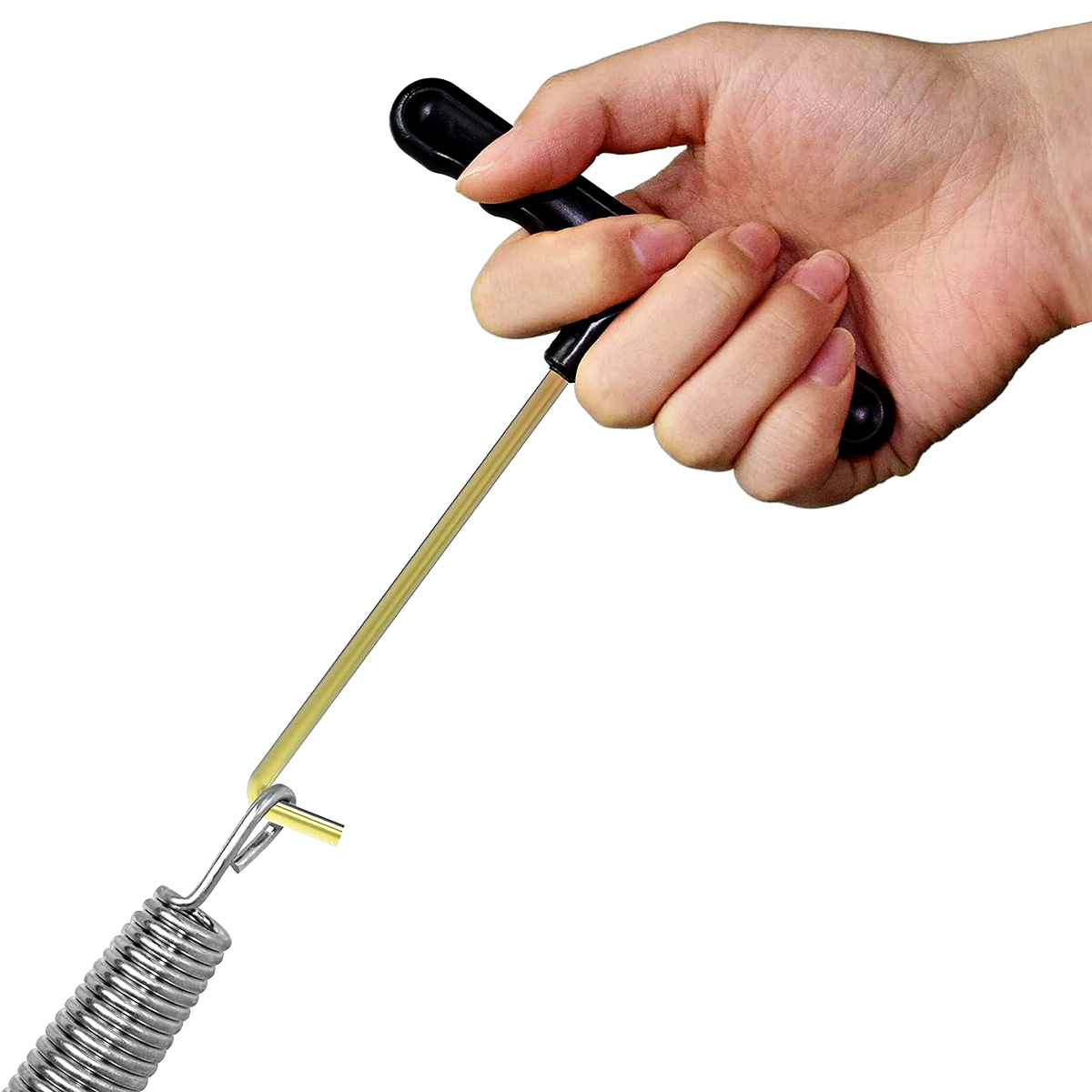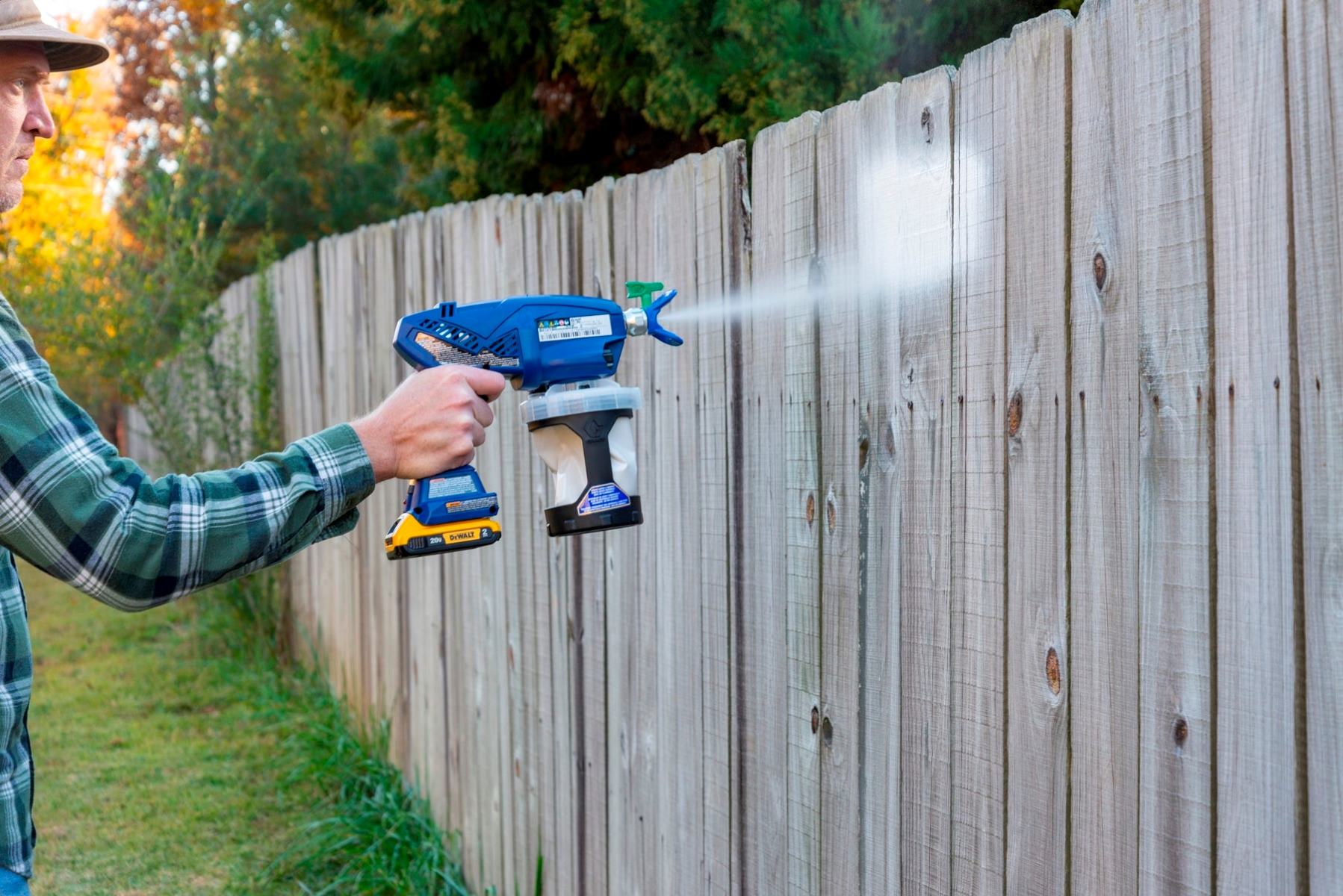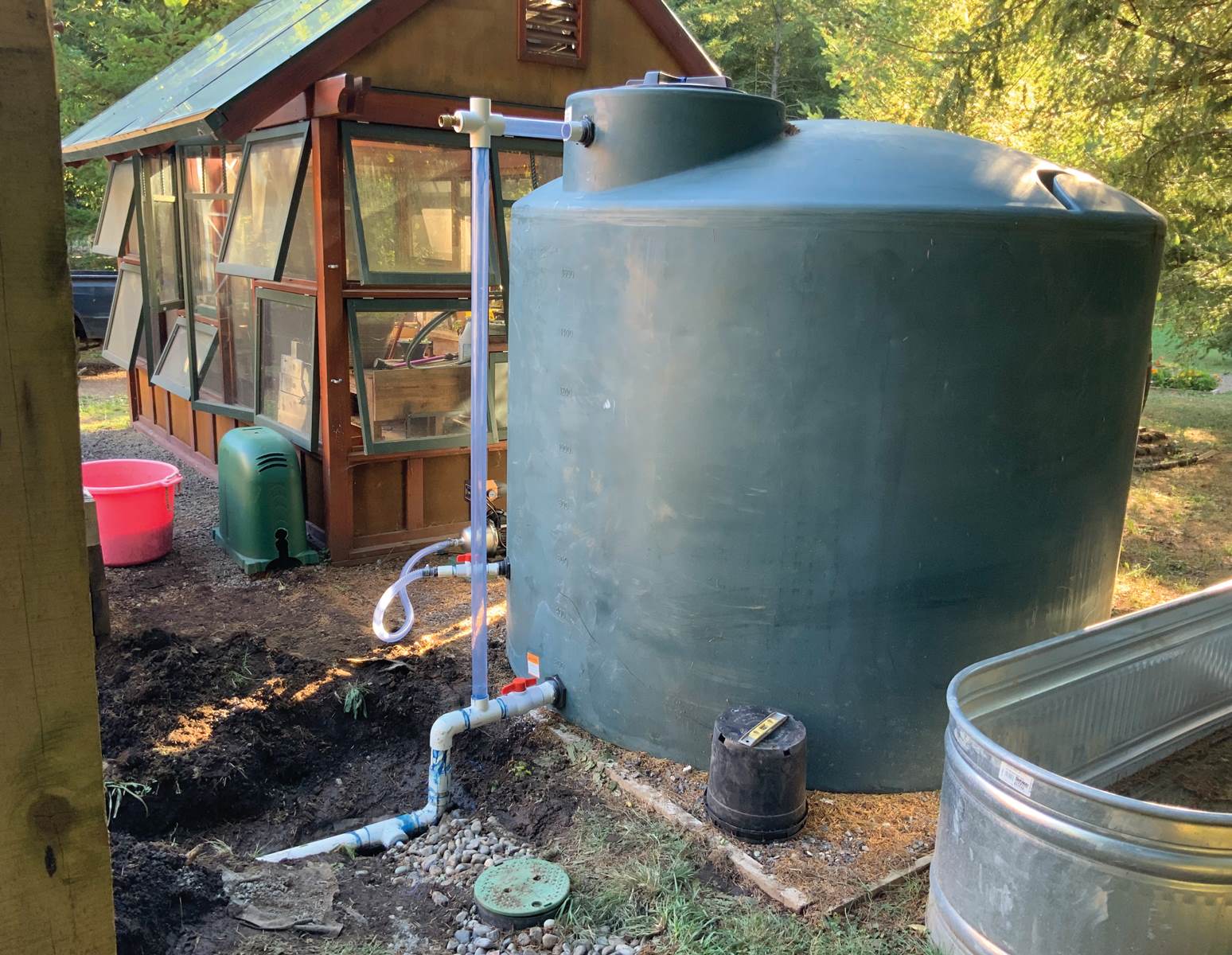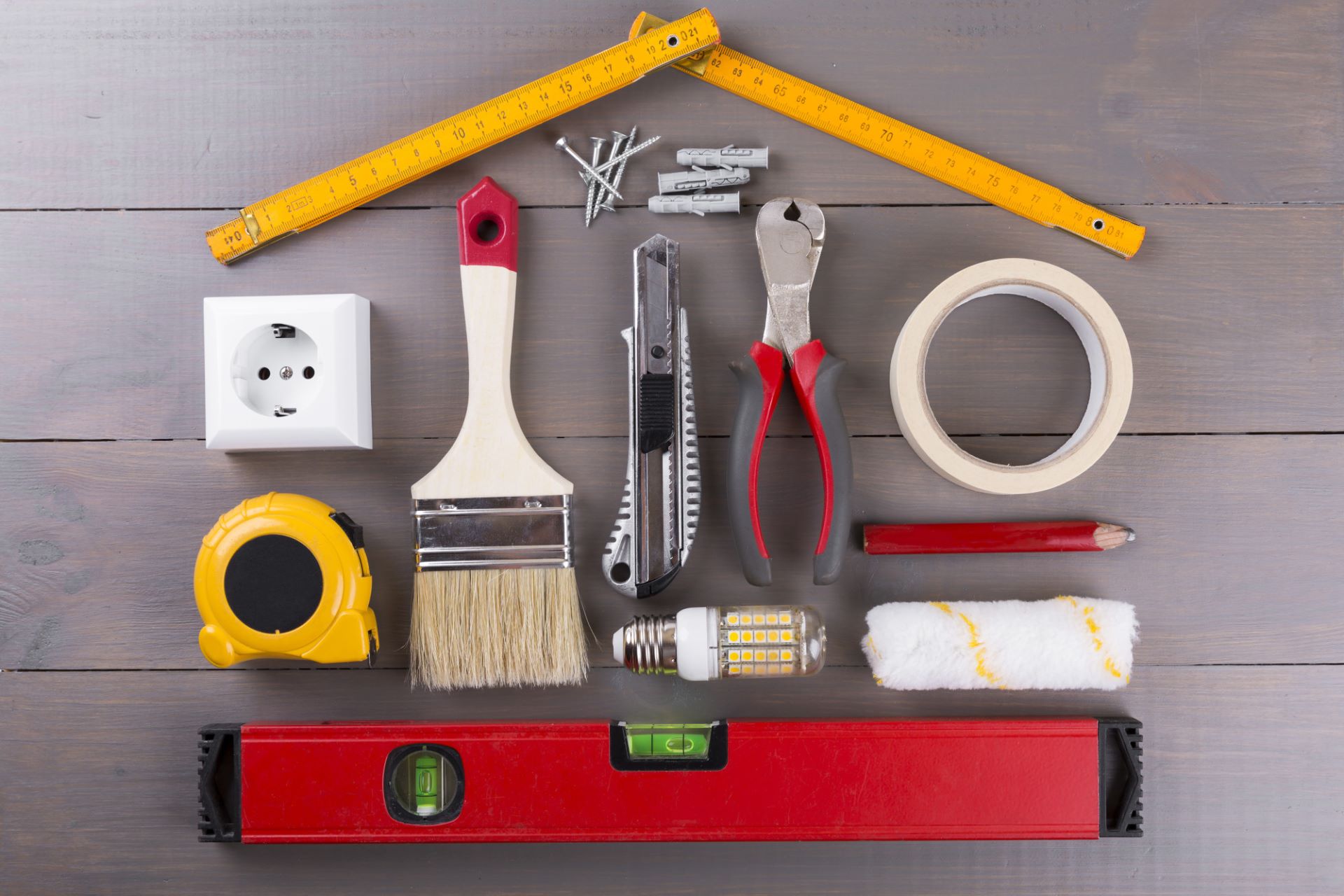Home>Home Maintenance>14 Spring Home Maintenance Projects To Do


Home Maintenance
14 Spring Home Maintenance Projects To Do
Modified: October 18, 2024
Keep your home in tip-top shape this spring with these 14 essential home maintenance projects. From cleaning gutters to checking HVAC systems, take care of your home with ease.
(Many of the links in this article redirect to a specific reviewed product. Your purchase of these products through affiliate links helps to generate commission for Storables.com, at no extra cost. Learn more)
Introduction
Welcome to the season of renewal and fresh beginnings! As the frosty winter melts away, it’s time to turn our attention to spring home maintenance projects. Spring is the perfect time to assess and address any issues that may have arisen during the colder months and prepare our homes for the warmer seasons ahead.
By taking proactive steps to maintain and improve our homes, we can ensure they remain safe, comfortable, and visually appealing. In this article, we will explore 14 essential spring home maintenance projects that will help us achieve just that.
From inspecting and cleaning gutters to evaluating and improving home security systems, these projects cover a wide range of areas within and outside the home. Not only will they enhance the functionality and condition of our homes, but they will also contribute towards increasing their value.
So, let’s grab our tools and dive into these spring home maintenance projects to give our homes the care and attention they deserve!
Key Takeaways:
- Spring home maintenance projects, from cleaning gutters to evaluating security systems, are essential for ensuring a safe, visually appealing, and well-maintained home for the warmer seasons ahead.
- By investing time and effort in spring home maintenance, homeowners can protect their property, enhance curb appeal, and create a welcoming environment for family and friends to enjoy.
Read more: What Home Projects To Do Before Selling?
Inspect and Clean Gutters
As the winter snow and ice melt, it’s vital to inspect and clean your gutters to ensure they are free from debris and functioning properly. Clogged gutters can lead to water overflow, which can damage the roof, siding, and foundation of your home.
To get started, grab a sturdy ladder, some gloves, and a trowel or scoop. Carefully climb up and begin removing any leaves, twigs, and other debris from the gutters. Be sure to also check for any signs of damage, such as loose or broken sections.
Once the gutters are clear, flush them out with a hose to ensure proper water flow. Pay attention to any clogs or areas where water seems to be pooling. This could indicate a blockage that needs to be addressed.
If you notice any loose or leaky gutters, now is the time to make repairs. Tighten loose screws or nails, and seal any leaks with gutter sealant. Replace any damaged sections to ensure the gutters are functioning effectively.
Gutter maintenance is crucial as it helps prevent water damage to your home’s foundation, basement, and exterior surfaces. By keeping the gutters clean and in good condition, you can avoid costly repairs in the future.
Remember to exercise caution when working on ladders and roofs. If you are uncomfortable with heights or unsure about handling gutter maintenance yourself, it is best to consult a professional.
Check and Repair Roof
Your roof is your home’s first line of defense against the elements, so it’s crucial to inspect it for any signs of damage or wear and tear. Spring is an ideal time to do this, as it allows you to address any issues before the summer storms arrive.
Start by visually inspecting your roof from the ground. Look for missing or damaged shingles, sagging areas, or signs of water damage. Binoculars can be helpful in getting a closer look at the condition of your roof without having to climb up.
If you feel comfortable doing so, climb up a ladder to get a closer look. Check for cracked or blistered shingles, loose or deteriorated flashing, and any signs of moss or algae growth. These issues can lead to leaks and further damage if left unattended.
If you notice any problems, consider calling a professional roofing contractor to assess and repair the damage. They will have the expertise and tools necessary to safely and effectively address any issues and ensure the integrity of your roof.
In addition to addressing existing damage, take preventative measures to protect your roof. Trim back any tree branches that may be touching or overhanging your roof, as they can cause damage during high winds or storms. Clean out any debris or leaves that may have accumulated in the roof valleys or gutters.
Regular roof maintenance and timely repairs can extend the lifespan of your roof and save you from costly repairs down the road. By keeping a vigilant eye on the condition of your roof, you can ensure that it continues to provide reliable protection for your home and family.
Replace Damaged Siding
The siding of your home not only enhances its curb appeal but also serves as a protective barrier against the elements. Over time, siding can become damaged or worn out, compromising its function and appearance. Spring is the ideal time to inspect your siding and replace any damaged sections.
Start by walking around your home and visually inspecting the siding. Look for signs of cracks, warping, or rotting, as well as any areas where the siding may be coming loose or detached. These issues can allow moisture to penetrate your home, leading to more extensive and costly damage.
If you notice any damaged siding, it’s important to address it promptly. Start by removing the affected sections, being careful not to damage the surrounding siding. You may need to use a pry bar or utility knife to carefully detach the damaged pieces.
Once the damaged sections are removed, measure and cut replacement siding to fit. Make sure to use the same type and color of siding to maintain a uniform appearance. Secure the new siding in place, ensuring a tight and secure fit. You may need to use nails, screws, or siding clips depending on the type of siding you have.
While replacing damaged siding can be a DIY project, it’s important to consider hiring a professional if you are unsure or uncomfortable with the process. A professional can ensure that the new siding is installed correctly and provide recommendations based on the specific needs of your home.
In addition to replacing damaged siding, consider giving your entire home a fresh coat of paint. This not only improves its appearance but also provides an extra layer of protection. Choose high-quality exterior paint that is designed to withstand the elements for long-lasting results.
By regularly inspecting and addressing damaged siding, you can maintain the integrity and beauty of your home while protecting it from potential water damage and other issues.
Clean and Repair Windows
Windows play a crucial role in our homes, providing natural light, ventilation, and a view of the outside world. Over time, windows can accumulate dirt, dust, and grime, making them less efficient and detracting from the overall beauty of your home. Spring is the perfect time to clean and repair your windows for optimal performance and aesthetics.
Begin by dusting and vacuuming the window frames, sills, and tracks to remove any loose debris. Use a damp cloth and mild cleaning solution to wipe down the frames, paying special attention to any areas that are visibly dirty or sticky. If you have wooden frames, be sure to use a cleaner that is safe for wood surfaces.
Next, tackle the glass itself. Start by using a glass cleaner or a solution of water and vinegar to remove any streaks or smudges. Spray the cleaner directly onto the glass or onto a microfiber cloth and wipe in a circular motion. For stubborn spots, a razor blade or window scraper can be used, but exercise caution to avoid scratching the glass.
While cleaning your windows, take the opportunity to inspect them for any signs of damage or wear. Check for loose or broken panes, deteriorated weatherstripping, or malfunctioning mechanisms. If you come across any issues, make a note to address them for repair or replacement.
To keep your windows functioning properly, lubricate hinges, locks, and tracks with a silicone-based lubricant. This will help prevent sticking and ensure smooth operation. If you notice any gaps or drafts around the windows, caulk or weatherproofing strips can be used to seal them and improve energy efficiency.
If you have storm windows or screens, now is a good time to clean and install them as well. Remove screens and gently wash them with soapy water, allowing them to air dry completely before re-installation. For storm windows, inspect for damage and ensure they are properly fitted and sealed.
Clean, well-maintained windows not only enhance the appearance of your home but also allow for better natural light and improved energy efficiency. By taking the time to clean and repair your windows, you can enjoy clear views and a comfortable living environment.
Service Heating and Cooling Systems
With the change of seasons, it’s important to ensure that your heating and cooling systems are running efficiently and effectively. Spring is the perfect time to schedule professional service for these systems, helping to maintain their performance, extend their lifespan, and reduce energy costs.
Start by contacting a licensed HVAC professional to schedule a maintenance appointment. During this service, the technician will perform a thorough inspection and cleaning of your heating and cooling systems.
For your heating system, the technician will inspect the furnace or heat pump, clean or replace the filters, and check the ignition and burners. They will also inspect the ductwork for any leaks or damage that could compromise the system’s efficiency.
When it comes to your cooling system, the technician will check the air conditioner or heat pump for any issues. They will clean or replace the air filters, inspect the condenser coils, and check refrigerant levels to ensure proper cooling performance.
In addition to the professional service, there are a few tasks you can do yourself to help maintain your heating and cooling systems. This includes regularly cleaning or replacing air filters according to manufacturer guidelines. Clogged filters can restrict airflow and reduce system efficiency.
You can also inspect the area around your outdoor unit and remove any debris, such as leaves and twigs, that may have accumulated. This allows for proper airflow and prevents the unit from working harder than necessary.
Regular servicing of your heating and cooling systems not only ensures their optimal performance but also helps to identify and address potential issues before they become major problems. Additionally, well-maintained systems are more energy-efficient, which can result in significant savings on your utility bills.
By taking the time to service your heating and cooling systems in the spring, you can rest assured that your home will be comfortable and ready to handle the temperature changes that come with the seasons.
Test Smoke and Carbon Monoxide Detectors
Keeping your home safe from the dangers of smoke and carbon monoxide is essential for the well-being of you and your family. Spring is a good time to test your smoke and carbon monoxide detectors and ensure they are functioning properly.
Start by pressing the test button on each detector to check if the alarm sounds. If the alarm does not go off or if it sounds weak, replace the batteries in the detector. It’s recommended to replace the batteries in your smoke and carbon monoxide detectors at least once a year, even if they are still functioning properly.
In addition to battery replacement, it’s important to clean your detectors to eliminate any dust or debris that might obstruct their functionality. Use a soft brush or vacuum cleaner attachment to gently remove any buildup from the detectors.
It’s also essential to pay attention to the age of your detectors. Smoke detectors typically have a lifespan of 10 years, while carbon monoxide detectors last for around 5 to 7 years. If your detectors are approaching or have exceeded their recommended lifespan, it’s time to replace them with new ones.
Be sure to check the placement of your detectors as well. Install smoke detectors on every level of your home, including inside each bedroom and in the hallway outside sleeping areas. Carbon monoxide detectors should be placed near bedrooms and in common areas that have fuel-burning appliances.
By regularly testing and maintaining your smoke and carbon monoxide detectors, you can be confident that your home is protected from these potential hazards. Remember, these devices play a crucial role in providing early warning of dangerous situations, giving you and your family precious time to evacuate and seek safety.
Don’t forget to review your home emergency plan with your family members, including the designated meeting place outside the home in case of an emergency. Stay vigilant and prioritize the safety of your loved ones by ensuring that your smoke and carbon monoxide detectors are in proper working condition.
Check and Maintain Outdoor Lighting
Outdoor lighting not only enhances the beauty of your home but also improves safety and security during the darker hours. Spring is an ideal time to check and maintain your outdoor lighting to ensure it is in good working condition.
Start by inspecting all outdoor light fixtures, including porch lights, pathway lights, and landscape lighting. Look for any signs of damage, such as broken bulbs, loose wires, or damaged fixtures. Replace any burnt-out bulbs and tighten any loose connections.
Consider upgrading to energy-efficient LED bulbs, which are not only longer-lasting but also more cost-effective in the long run. LED bulbs consume less energy and produce less heat than traditional incandescent bulbs, making them an eco-friendly option for your outdoor lighting.
Next, clean the light fixtures to remove dirt, dust, and debris that may have accumulated over time. Wipe down the surfaces with a damp cloth, being careful not to damage any delicate parts. This will not only improve the appearance of the fixtures but also enhance the quality of the light they emit.
If you have solar-powered lights, check the solar panels and clean them as well. Dust or debris on the panels can reduce their efficiency and affect the performance of the lights. Use a soft cloth or brush to gently wipe the panels and ensure they are free from obstructions.
It’s also important to check the wiring and electrical connections of your outdoor lighting. Look for any signs of frayed wires or loose connections. If you notice any issues, it’s best to consult a professional electrician to address the problem and ensure safe and reliable operation.
Finally, consider the placement and effectiveness of your outdoor lighting. Ensure that walkways, entrances, and other key areas are well-lit to improve safety and deter potential intruders. You may want to add additional lighting fixtures or adjust the positioning of existing ones to achieve optimal coverage.
By regularly checking and maintaining your outdoor lighting, you can create a welcoming and safe environment around your home. Properly functioning outdoor lights not only enhance the aesthetic appeal but also provide peace of mind knowing that your outdoor spaces are well-illuminated and secure.
Check your roof for any signs of damage, such as missing shingles or leaks. Addressing these issues early can prevent more costly repairs down the line.
Clean and Repair Deck or Patio
Your deck or patio is a valuable outdoor living space that provides a place for relaxation, entertainment, and enjoyment of the outdoors. Over time, these areas can accumulate dirt, debris, and wear and tear from harsh weather conditions. Spring is the perfect time to clean and repair your deck or patio to ensure it is ready for the upcoming season.
Start by removing any furniture, plants, or other items from the deck or patio. Sweep away loose dirt, leaves, and debris using a broom or leaf blower. Pay attention to the corners and crevices, as they tend to collect more debris.
Next, thoroughly clean the surfaces of your deck or patio. If you have a wood deck, use a deck cleaner specifically formulated for wood surfaces. Scrub the surface using a stiff brush or power washer to remove any stains or discoloration. Rinse the area well with water to remove any residue.
If you have a concrete or stone patio, use a mild detergent or patio cleaner and scrub the surface with a brush or broom. Rinse the area thoroughly to ensure all the cleaning solution is removed.
While cleaning, take the opportunity to inspect the condition of your deck or patio. Look for any loose boards, cracks, or signs of rotting wood. Replace any damaged boards or make necessary repairs to ensure the structural integrity and safety of the area.
If you have a wooden deck, consider applying a fresh coat of stain or sealer to protect it from the elements. Not only does this enhance the appearance of the wood, but it also helps to prevent moisture damage and prolong the lifespan of your deck.
Finally, don’t forget to tend to the surrounding landscaping and vegetation. Trim overhanging branches or shrubs that may be encroaching on your deck or patio. This not only improves aesthetics but also helps to prevent debris from falling onto the surface.
By regularly cleaning and maintaining your deck or patio, you can extend its lifespan and ensure a clean and inviting outdoor space for relaxation and entertainment. With a little effort and care, you can enjoy your deck or patio season after season.
Inspect and Maintain Landscaping
Your landscaping is a key component of your home’s overall curb appeal and can greatly enhance the beauty and enjoyment of your outdoor space. As spring arrives, it’s important to inspect and maintain your landscaping to ensure it thrives throughout the season.
Start by walking around your property and visually inspecting your plants, trees, and shrubs. Look for any signs of damage, such as broken branches, insect infestations, or disease. Prune or trim any damaged or dead branches to promote healthy growth and maintain a neat appearance.
Inspect your flower beds and garden areas for weeds. Remove any weeds by hand or use a garden hoe or fork to dig them out. This will help prevent the weeds from competing with your plants for nutrients and water.
Consider adding a layer of mulch to your flower beds and around trees and shrubs. Mulch helps to suppress weed growth, retain moisture in the soil, and provide insulation for plant roots. It also adds a neat and finished look to your landscaping.
As the weather warms up, it’s important to give your plants the water they need to thrive. Check the soil moisture regularly and water plants deeply as necessary. Be mindful of any watering restrictions in your area and use water-efficient practices, such as watering early in the morning or in the evening to minimize evaporation.
Feed your plants with a slow-release fertilizer or organic compost to provide them with the necessary nutrients for healthy growth. Follow the instructions on the packaging for the appropriate application rates and timing.
Take this opportunity to assess your landscaping design and make any necessary adjustments. Consider adding new plants or flowers to introduce vibrant colors and textures. Arrange plants in a way that creates visual interest and complements the overall aesthetics of your home.
Lastly, don’t forget to maintain your lawn. Mow it to an appropriate height, typically between 2.5 to 3 inches, to encourage strong root growth and fend off weeds. Regularly remove leaves, twigs, and debris from the lawn to promote a healthy and attractive appearance.
By inspecting and maintaining your landscaping, you can create a beautiful and inviting outdoor space that adds value to your home and provides a peaceful retreat for you and your family to enjoy throughout the spring and beyond.
Clean and Organize Garage or Shed
Over time, our garages or sheds can become cluttered and disorganized, making it difficult to find and access tools, equipment, and other belongings. Spring is the perfect time to tackle the task of cleaning and organizing these spaces to maximize their functionality and efficiency.
Start by emptying out the garage or shed completely. This allows you to assess the contents and create a fresh, clean space to work with. Sort through the items and categorize them into keep, donate/sell, or discard piles.
Take the opportunity to thoroughly clean the space, including sweeping or vacuuming the floors, wiping down shelves and surfaces, and removing any cobwebs or debris. Consider applying a fresh coat of paint to brighten up the area and create a more appealing environment.
Once the space is clean, it’s time to organize. Start by installing shelves, hooks, and other storage solutions that best suit your needs. Utilize vertical space to maximize storage capacity and keep items off the floor.
Categorize and group similar items together. This could include tools, gardening supplies, sports equipment, or seasonal items. Use clear plastic bins or labeled storage containers to keep items organized and easily accessible.
Consider investing in pegboards or wall-mounted tool racks to keep frequently used tools and equipment within reach. This not only saves space but also helps maintain an organized and efficient workspace.
Dispose of any expired or unused items, such as old paint cans or worn-out tools. Properly discard hazardous materials according to local guidelines.
Finally, develop a maintenance plan to ensure the garage or shed remains organized. Regularly clean and declutter the area, and designate specific spots for newly acquired items. Encourage family members to put away items after use to maintain the organization.
A clean and organized garage or shed not only improves functionality but also reduces stress and saves time by making it easier to find and access the items you need. Use this spring cleaning opportunity to create a well-organized space that will serve you well throughout the year.
Clean and Repair Driveway or Walkways
Your driveway and walkways are not only functional components of your home but also contribute to its overall curb appeal. Winter weather, with its snow, ice, and freezing temperatures, can take a toll on these surfaces. Spring is the perfect time to clean and repair your driveway and walkways to restore their appearance and ensure their longevity.
Start by sweeping away any loose debris, such as leaves or dirt, from the surface. Use a broom or leaf blower to clear away as much as possible. This will make the cleaning process more effective.
Next, tackle any stains or discoloration on your driveway or walkways. Use a pressure washer or a specialized concrete cleaner to remove oil stains, rust spots, or other blemishes. Follow the instructions on the cleaning product and use a scrub brush to work on stubborn stains if needed.
After cleaning, inspect the driveway and walkways for any cracks or potholes. These can be detrimental to their longevity and pose a safety hazard. Fill in smaller cracks with a concrete crack filler or asphalt patch, following the manufacturer’s instructions. For larger cracks or potholes, it may be necessary to call a professional to assess and repair the damage.
Sealing your driveway is another important step towards maintaining its integrity and extending its lifespan. Consider applying a high-quality sealer that is suitable for your specific driveway material, such as asphalt or concrete. This will help protect the surface from the damaging effects of water, UV rays, and harsh weather conditions.
Lastly, pay attention to the edges of your driveway and walkways. Grass or weeds may have popped up along the edges during winter. Use a weed trimmer or edging tool to create clean and defined borders.
Regular cleaning and maintenance of your driveway and walkways not only enhance their appearance but also prevent further damage and ensure their longevity. By investing a little time and effort in spring, you can enjoy a well-maintained and visually appealing entrance to your home.
Paint or Touch Up Exterior Surfaces
The exterior surfaces of your home are constantly exposed to the elements, and over time, they can become faded, worn, or damaged. Spring is an ideal time to freshen up and protect these surfaces by painting or touching them up.
Start by inspecting the exterior of your home, including the walls, trim, doors, and shutters. Look for any signs of peeling paint, cracks, or areas that may need repair. These areas are particularly vulnerable to moisture and can lead to more extensive damage if left unattended.
If you notice any peeling or cracked paint, it’s essential to remove the loose or damaged paint before applying a new coat. Use a scraper or a wire brush to gently remove the old paint, being careful not to damage the underlying surface.
Once the damaged paint is removed, ensure that the surface is clean and free from dirt, dust, and grease. Use a mild detergent and water to wash the area and rinse it thoroughly. Allow the surface to dry completely before moving on to the painting or touch-up phase.
If you’re opting to repaint the entire exterior, choose a high-quality exterior paint that is suitable for the specific surface material, such as wood, stucco, or siding. Select a color that complements your home’s architecture and existing color scheme.
Before painting, protect the surrounding areas, such as windows, doors, and landscaping, by using painter’s tape or drop cloths. Apply a primer if necessary, following the manufacturer’s instructions, to ensure good adhesion and longevity of the paint.
If you’re simply touching up small areas, be sure to use the same type and color of paint to maintain a seamless look. Apply the paint with a brush or small roller, following the natural grain or pattern of the surface.
Once the paint is dry, step back and admire the refreshed look of your home’s exterior. A fresh coat of paint not only improves its appearance but also helps protect the underlying surfaces from the damaging effects of the sun, rain, and other elements.
Regularly inspect and touch up exterior surfaces as needed to maintain the integrity and beauty of your home. By investing in the care and upkeep of your home’s exterior, you can enhance its curb appeal and protect your investment for years to come.
Read more: What To Do To Grass In Spring
Check and Repair Fences
Fences not only provide privacy and security but also add aesthetic value to your property. However, over time, fences can deteriorate and suffer from various issues. Spring is an opportune time to check and repair your fences to ensure they remain functional, secure, and visually appealing.
Start by walking along the perimeter of your property and inspecting the fence. Look for signs of damage, such as loose or broken boards, leaning or sagging posts, and rusty or damaged hinges and latches.
If you have a wooden fence, pay particular attention to the condition of the boards. Replace any cracked, warped, or rotting boards to maintain the structural integrity of the fence. Secure any loose boards with screws or nails, ensuring a tight fit.
Next, check the posts of your fence. Make sure they are firmly planted in the ground and not leaning or shifting. If you notice any instability, use a post level to straighten them and reinforce them with concrete or additional support if necessary.
Inspect the hardware such as hinges, latches, locks, and gate mechanisms. Lubricate them with a silicone-based lubricant to ensure smooth operation. Replace any damaged or worn-out hardware to ensure proper functionality and security.
If you have a metal or chain-link fence, look for any signs of rust or corrosion. Use a wire brush or sandpaper to remove any rust, and apply a rust-inhibiting paint or a rust converter to prevent further corrosion. Repair or replace any damaged sections to maintain the appearance and integrity of the fence.
In addition to repairs, consider applying a fresh coat of paint or stain to your fence. This not only enhances its appearance but also provides an extra layer of protection against the elements. Choose a paint or stain that is designed for outdoor use and suits the material of your fence.
Regularly maintaining and repairing your fences can help extend their lifespan and avoid more costly replacements. A well-maintained fence not only adds value to your property but also provides privacy, security, and a welcoming atmosphere for your outdoor space.
Evaluate and Improve Home Security Systems
Your home’s security is of utmost importance, and spring is an ideal time to evaluate and improve your home security systems. By taking proactive measures, you can ensure the safety and peace of mind for you and your family.
Start by assessing your current security systems, such as alarm systems, surveillance cameras, and motion sensor lights. Check if they are in proper working condition and make sure that all detectors and sensors are functioning correctly.
Consider upgrading or expanding your security system if necessary. Technology is continuously evolving, and there may be new features or advancements available that can enhance the security of your home. Research and consult with professionals to determine the best upgrades for your specific needs.
Review your entry points, such as doors and windows, to ensure they have adequate security measures in place. Install deadbolt locks on exterior doors and reinforce doorframes and hinges if needed. Consider installing window locks or security bars to further enhance the security of your home.
Evaluate the placement and visibility of your outdoor lighting. Well-lit areas deter potential intruders, so ensure that entrances, walkways, and other vulnerable spots have adequate lighting. Upgrade to motion sensor lights, which activate upon detecting movement, further enhancing security and conserving energy.
Consider installing security cameras around your property, particularly in areas with high visibility or vulnerability. These cameras not only act as deterrents but also provide valuable evidence in case of any security incidents. Opt for cameras with remote access capabilities, allowing you to monitor your property even when you’re away.
Don’t forget about securing your valuables inside your home as well. Invest in a safe to secure important documents, jewelry, and other valuable items. Place the safe in a discreet and well-protected area of your home.
Review your home’s emergency preparedness, including fire alarms, carbon monoxide detectors, and emergency exits. Test and replace batteries in these devices regularly to ensure they are functioning properly. Create or update your emergency plan, including evacuation routes and a designated meeting place for your family.
Lastly, consider enrolling in a home security monitoring service. These services provide an extra layer of protection by monitoring your home 24/7 and alerting authorities in case of a break-in or emergency.
By evaluating and improving your home security systems, you can enhance the safety and well-being of your household. Taking these proactive measures will provide you with peace of mind, knowing that you have taken steps to protect your home and loved ones.
Conclusion
As the spring season brings new life and renewed energy, it’s the perfect time to embark on essential home maintenance projects. By taking proactive steps to inspect, clean, and repair various aspects of your home, you can ensure its longevity, functionality, and visual appeal.
The 14 spring home maintenance projects covered in this article provide a comprehensive guide to caring for your home. From inspecting and cleaning gutters to evaluating and improving home security systems, each task plays a vital role in maintaining and enhancing your home’s condition.
Remember, it’s important to strike a balance between optimizing your home for search engine performance and ensuring a seamless and enjoyable reading experience. Utilize keywords naturally throughout the article while providing valuable insights and engaging content.
By incorporating SEO optimization techniques, providing in-depth information, and infusing creativity, you can produce an engaging and informative article that captivates readers while also boosting its visibility in search engine results.
So, grab your tools, get to work, and enjoy the satisfaction of completing these spring home maintenance projects. By investing time and effort now, you can ensure that your home remains safe, comfortable, and aesthetically pleasing for years to come.
Remember, spring is a time of renewal, and as you care for your home, you’re also investing in the well-being of your family and creating a space where cherished memories are made. Let the tasks outlined in this article guide you in achieving a well-maintained and beautiful home that you can be proud of.
Frequently Asked Questions about 14 Spring Home Maintenance Projects To Do
Was this page helpful?
At Storables.com, we guarantee accurate and reliable information. Our content, validated by Expert Board Contributors, is crafted following stringent Editorial Policies. We're committed to providing you with well-researched, expert-backed insights for all your informational needs.













0 thoughts on “14 Spring Home Maintenance Projects To Do”